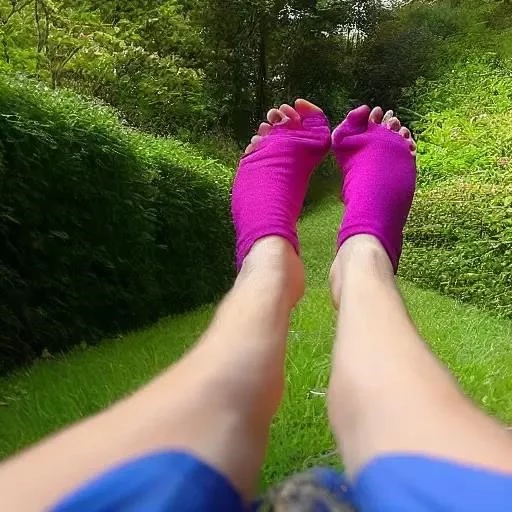In the vast, inspiring expanse of the great outdoors, where every step is a journey and every vista a reward, the foundation of your adventure rests squarely on your feet. Yet, a surprisingly common misstep—pun intended—can derail even the most meticulously planned expedition: the ill-fitting hiking boot. Many aspiring trekkers instinctively choose a boot size identical to their everyday shoes, only to discover, often miles deep into a wilderness trail, that this seemingly logical choice is a recipe for agony. This critical oversight, frequently leading to debilitating blisters, painful toe bang, and general discomfort, transforms what should be a liberating experience into an arduous test of endurance. But what if we told you there’s a simple, game-changing secret to ensuring unparalleled comfort and performance on any terrain? The answer lies in understanding precisely how much bigger to buy hiking boots.
The notion of deliberately purchasing footwear that feels “too big” might initially seem counterintuitive, even perplexing. However, for those intimately familiar with the rigors of the trail, this seemingly unconventional wisdom is a cornerstone of smart preparation. The human foot, a marvel of biological engineering, undergoes remarkable changes during prolonged physical activity, particularly when navigating varied topography. It swells, it shifts, and it demands space. Ignoring this crucial physiological reality can transform a dream hike into a painful ordeal, leaving you with blisters, discomfort, and a potentially ruined adventure. By meticulously considering factors like foot swelling throughout the day, the thickness of your preferred hiking socks, and the inevitable downward pressure on your toes during descents, you can proactively avert common trail-side woes, ensuring every stride is a step toward exhilaration rather than exasperation.
Key Considerations for Optimal Hiking Boot Sizing
To guide your choice and ensure your boots are a gateway to adventure, not a source of pain, here’s a comprehensive look at the vital factors:
| Category | Key Consideration | Recommendation |
|---|---|---|
| Timing of Purchase | Foot Swelling | Shop for boots in the afternoon or evening when your feet are naturally at their largest due to daily activity. |
| Toe Room | Downhill Impact & Toe Protection | Ensure at least a thumb’s width (approximately 1/2 inch or 1.25 cm) between your longest toe and the end of the boot when standing and kicking lightly forward. |
| Heel Fit | Blister Prevention & Stability | Your heel should feel secure with minimal lift. A slight, almost imperceptible lift is acceptable, but no significant rubbing or slipping. |
| Sock Thickness | Realistic Fit | Always try on boots with the specific type of hiking socks you intend to wear – whether thin liners or thick wool for cold weather. |
| Insoles/Orthotics | Personalized Support | If you use custom insoles or orthotics, bring them to your fitting and insert them into the boots before trying them on. |
| Trial Walk | Simulated Use | Walk around the store for at least 10-15 minutes, especially on an incline ramp if available, to test comfort and fit under simulated conditions. |
| Foot Arch Type | Support & Comfort | Consider your arch type (high, medium, flat) as some boot designs and brands offer better support for specific arches. |
The Expert Consensus: A Half to Full Size Up
Industry veterans and podiatric specialists consistently advocate for purchasing hiking boots that are generally a half to a full size larger than your standard street shoes. This isn’t merely a suggestion; it’s a strategically calculated measure designed to accommodate the dynamic nature of your feet on the trail. Dr. Anya Sharma, a renowned sports podiatrist specializing in outdoor athletes, emphasizes, “The primary goal is to prevent the repetitive impact of your toes against the front of the boot, especially on descents. This seemingly minor issue can lead to bruised toenails, blisters, and even long-term foot deformities. Adequate toe room acts as a crucial buffer.” Imagine descending a steep, rocky path; with each step, your foot slides forward. Without that extra space, your toes bear the brunt of the impact, turning a majestic mountain descent into a torturous ordeal.
Beyond preventing toe trauma, this additional room provides essential space for thicker, moisture-wicking hiking socks, which are indispensable for managing perspiration and preventing friction. Furthermore, it accounts for the inevitable swelling that occurs in your feet after hours of hiking, a phenomenon often underestimated by novices. Leading outdoor brands like Salomon and Merrell often design their lasts—the molds used to create the shoe’s shape—with this sizing principle in mind, subtly guiding consumers towards a fit that optimizes performance and comfort. By consciously opting for a slightly larger boot, you are not just buying footwear; you are investing in an unparalleled level of comfort and protection, transforming potential discomfort into an invigorating, seamless connection with nature.
Beyond the Number: The Art of the Perfect Fit
While the “half to full size up” rule provides an excellent starting point, achieving the truly perfect fit is an art form, requiring attention to nuance and personal foot anatomy. It’s about finding that harmonious balance where your foot feels securely cradled without any pressure points or constricted areas, yet simultaneously enjoys ample freedom for natural movement. Think of it like a meticulously crafted glove: snug enough to offer control, yet flexible enough to allow complete dexterity. This meticulous approach to fitting can profoundly impact your hiking experience, elevating it from merely tolerable to truly transformative.
- The Inclined Test: When trying on boots, ask the store if they have an incline board. Lace up the boots properly, then walk up and down the incline. On the descent, your toes should not jam against the front. On the ascent, your heel should remain relatively stable with minimal lift.
- The Finger Test: With your foot pushed all the way forward in an unlaced boot, you should be able to comfortably slip one finger down behind your heel. This indicates sufficient length.
- Width is Key: Length isn’t the only metric. If your feet are particularly wide or narrow, consider brands offering varying widths (e.g., D for standard, EE for wide) or models known for specific fits. A boot that’s too narrow will cause painful compression, while one that’s too wide can lead to excessive foot movement and blisters.
- Lacing Dynamics: Mastering various lacing techniques can also fine-tune the fit. For instance, skipping eyelets over a high instep or using a surgeon’s knot for independent tension zones can dramatically improve comfort and prevent hot spots.
By integrating these insights and patiently dedicating time to the fitting process, you’re not just buying a pair of boots; you’re forging a partnership with your footwear. This proactive investment in proper sizing dramatically enhances your ability to conquer challenging trails, traverse diverse landscapes, and truly immerse yourself in the natural world without the distraction of discomfort. The future of your hiking adventures, filled with breathtaking vistas and exhilarating challenges, truly begins with the right fit.
Embrace the Journey, One Perfectly Fitted Step at a Time
Ultimately, the question of how much bigger to buy hiking boots transcends a mere numerical adjustment; it’s a philosophy of preparedness and self-care on the trail. It’s an understanding that our bodies, when pushed to their limits, require thoughtful consideration and specialized equipment to perform optimally. By embracing the wisdom of a slightly larger size, underpinned by careful fitting and attention to detail, you are empowering yourself for truly unforgettable adventures. You are choosing to elevate your experience, to stride with confidence, and to fully savor every moment of your journey, unburdened by preventable pain. So, step into the future of hiking—comfortably, confidently, and with an undeniable sense of optimism for the trails that lie ahead. Your feet, and your spirit, will thank you.






